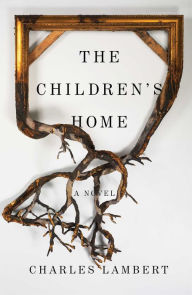The Children’s Home: A Novel
- By Charles Lambert
- Scribner
- 210 pp.
- Reviewed by Jennifer Bort Yacovissi
- January 14, 2016
This genre-bender is eerie and atmospheric but leaves way too many unanswered questions.

Without knowing anything else about this novel, a reader might clench at the title alone in anticipation of a dark tale. No book called The Children’s Home could possibly be sunny; the question is merely which shudder-inducing path it will tread. The cover gives a hint, with its empty picture frame twisting into a tangled claw of roots.
Still, Charles Lambert’s latest work resists easy classification. Let’s call it a mystery-thriller-horror-supernatural-ghost story with plenty of atmosphere, and oh so many questions that beg to be answered.
Morgan Fletcher lives a solitary existence on a solitary estate surrounded by walls. His only companion is his new housekeeper Engel, whom Morgan believes was sent to look after him by his sister, who lives elsewhere and is in charge of running an undefined family business.
Morgan has resigned himself to remaining hidden away on the estate, in the huge manor house, cataloging the books in its extensive libraries. He’s been horribly disfigured, to the point that he’s had all mirrors removed from the house, and one of Engel’s jobs is to ensure none of the other help ever crosses his path.
But we learn all of this a bit later, because the children begin to appear immediately. In fact, the first line of the book is, “The children began to arrive soon after Engel came to the house.” And then, “Other children arrived soon after that, as though Morgan had earned them by taking the first one in.”
Morgan accepts the mysterious influx of kids virtually without comment, appearing to be only mildly curious about where they are coming from, even when they seem to appear from thin air.
“Morgan was standing by the drawing room window and gazing out into the garden when a square of air above the lawn seemed to ripple as though it were silk and a knife had been drawn across it, and a child appeared on the lawn and began to walk towards the house…”
Perhaps the happy realization that none of the children flinch at the sight of him, and in fact seem to enjoy his presence, eliminates his desire to question their origins and exactly what they are doing here.
The concept of where “here” is — both in time and location — remains unclear throughout the story, as does the passage of time within the book. That lack of a solid reference point simply adds to the eerie atmosphere. The author repeatedly uses the phrase “his own country” rather than ever naming it.
The use of chapter subheads (“in which Engel chooses a room,” “in which the car is prepared for service”) gives the tale a Dickensian feel, but the presence of that car and other indications seem to place this in mid-20th-century England. References to “the troubles” that demand the building of the wall around the property hint at Northern Ireland. In truth, it may be that the story is set in a time and country none of us are familiar with.
The eldest of the children, David, is about 5 years old when he arrives with a nametag attached to his wrist. He is solemn and serious-minded and becomes more adult-like as the story progresses, until he seems like Morgan’s peer, possibly even the one who is in charge. Certainly, he is far more aware of what’s going on.
When one of the children falls ill, Engel insists on calling for a doctor, which of course is risky given the odd circumstances. As it turns out, though, Dr. Crane becomes a staunch ally and friend; he is the one to first fend off the “authorities” when they finally do arrive.
It is to Dr. Crane that Morgan tells his story, which is so psychologically fraught that it could have rated its own book. But even after that, there’s still a looming family secret, though only David seems to be aware that it exists and will eventually need to be revealed and confronted.
And when the story finally gets to that point — when, at David’s direction, Morgan, Dr. Crane, and the eldest children venture out to rescue the baby who has been taken from them — the climax becomes oddly oblique, raising far more questions than it offers answers.
The scene is certainly gruesome enough, but comes out of nowhere and answers none of the essential questions of what is truly going on and, more importantly, why. Lambert has not offered nearly enough clues or context for us to be able to make any real sense of what we’re seeing, nor does he fill in the blanks as we watch the scene unfold.
There is a lot going on in The Children’s Home, probably too many things. The author writes compellingly, but by over-freighting his story, he renders it ultimately unsatisfying. On the other hand, this could be an instance in which it is the reader who is being obtuse. Maybe you’ll have better luck getting to “Aha!”
Jennifer Bort Yacovissi’s debut novel, Up the Hill to Home, tells the story of four generations of a family in Washington, DC, between the Civil War and the Great Depression. Jenny is a member of PEN/America and the National Book Critics’ Circle, and reviews regularly for both the Independent and the Historical Novels Review of the Historical Novel Society. She is also president of the Annapolis chapter of the Maryland Writers’ Association.

